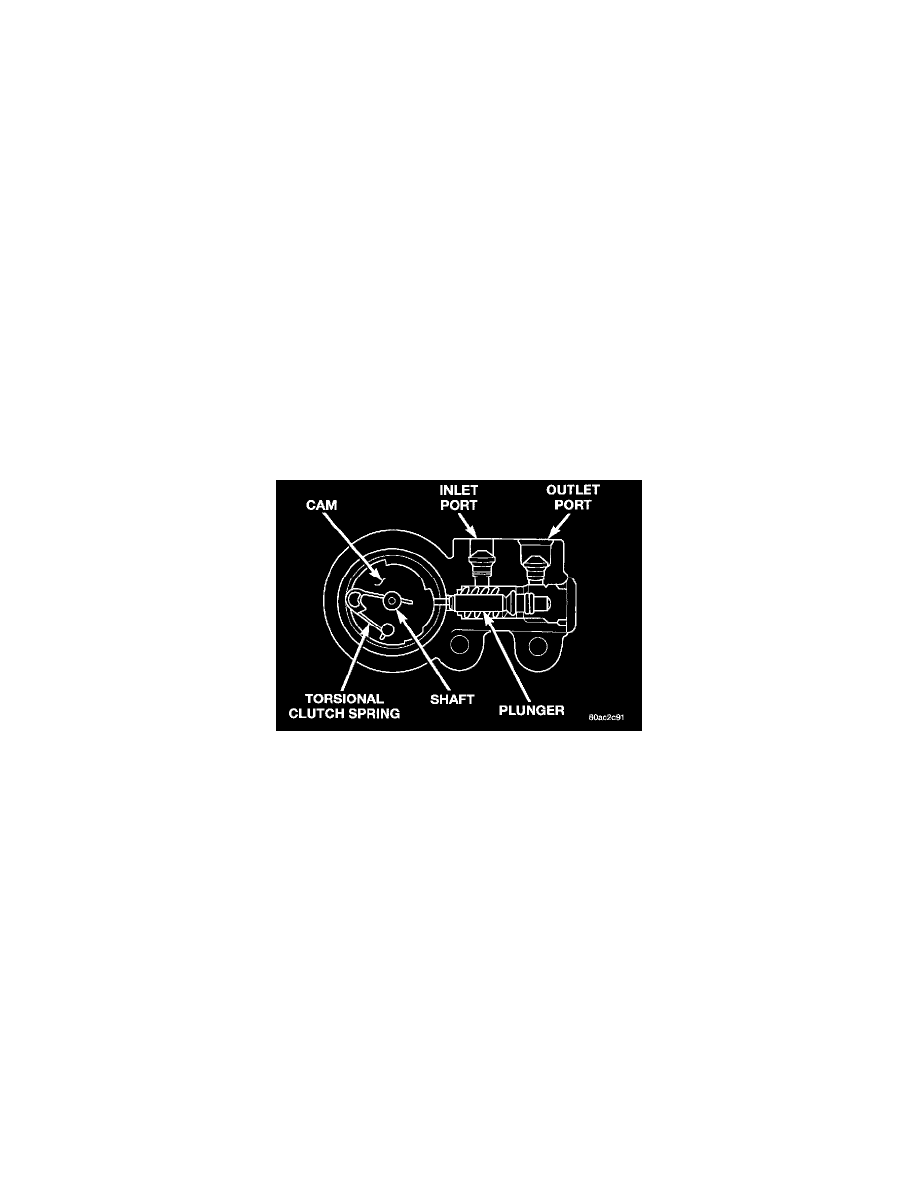RAM 1500 Truck 2WD V6-3.9L VIN X (1999)

Brake Proportioning/Combination Valve: Description and Operation
COMBINATION VALVE
The combination valve contains a pressure differential valve and switch, metering valve and a rear brake proportioning valve on 1500 models. The
combination valve/rear brake proportioning valve are not repairable and must be replaced as an assembly.
PRESSURE DIFFERENTIAL SWITCH
The pressure differential switch is connected to the brake warning lamp. The switch is triggered by movement of the switch valve. The purpose of the
switch is to monitor fluid pressure in the separate front/rear brake hydraulic circuits.
A decrease or loss of fluid pressure in either hydraulic circuit will cause the switch valve to shuttle forward or rearward in response to the pressure
differential. Movement of the switch valve will push the switch plunger upward. This closes the switch internal contacts completing the electrical
circuit to the warning lamp. The switch valve may remain in an actuated position until repair restores system pressures to normal levels.
METERING VALVE
The metering valve is used to balance brake action between the front disc and rear drum brakes. The valve holds-off the initial pressure to the front
disc brakes until the rear brake shoes retracting springs are overcome. The valve is designed to maintain front brake fluid pressure at 241 - 517 kPa
(35 - 75 psi) until the hold-off limit of 310 - 689 kPa (100 psi) is reached. At this point, the metering valve opens completely permitting full fluid
apply pressure to the front disc brakes. This reduces front brake lining wear during low deceleration stops.
PROPORTIONING VALVE (1500 Model)
The proportioning valve is used to balance front rear brake action at high decelerations. The valve allows normal fluid flow during moderate braking.
The valve only controls fluid flow during high decelerations brake stops, when a percentage of rear weight is transferred to the front wheels.
HEIGHT SENSING PROPORTIONING VALVE
Height Sensing Proportioning Valve
The Height Sensing Proportioning Valve provides two different brake balance modes to the rear brake based on the vehicle load. This is accomplished
by turning the valve on or off. When the vehicle is not loaded hydraulic pressure is reduced to the rear brakes after the split point. When the vehicle is
carrying a full load the actuator lever moves up to change the valve setting. The valve now allows full hydraulic pressure to the rear brake. The valve
contains a plunger, cam, torsional clutch spring and actuator shaft. This valve is used on all 4x4 2500 vehicles with 8,800 GVW.
The valve is mounted to the left frame rail above the rear axle. The valve has an actuator lever connected by a link to the left lower shock bracket. The
valve is turned on and off as the axle to frame height changes due to the load in the vehicle. A torsional clutch spring attached to the valve shaft and
cam is used as an override feature. Once the valve is positioned during brake application, the spring prevents the valve from changing position in the
event of an abrupt suspension movement such as going over a bump. During this instance the cam is held in position while the shaft is allowed to
rotate.
CAUTION:
-
Any modification to the suspension which would affect suspension height also may affect braking performance.
-
If the valve assembly is replaced for service, the lever must not be adjusted, it is preset at the factory. The Height Sensing Proportioning Valve is
service as an assembly only.
